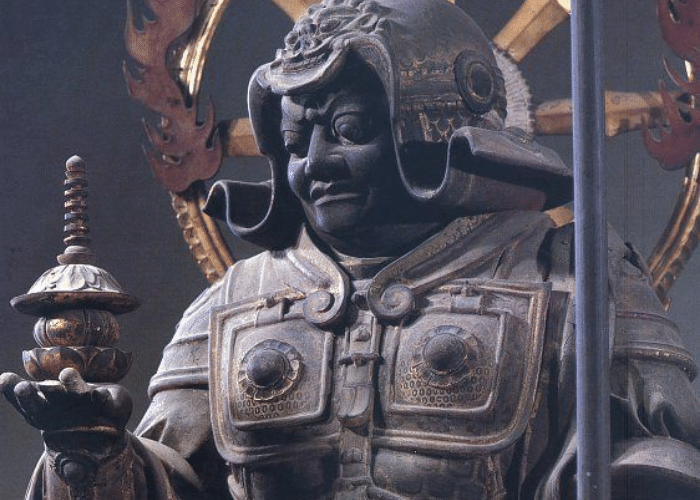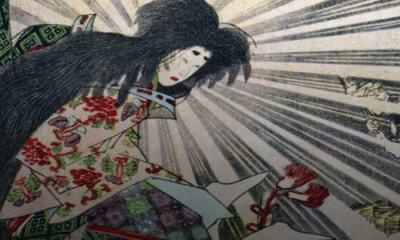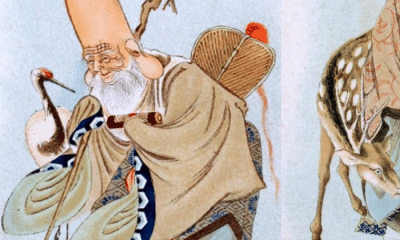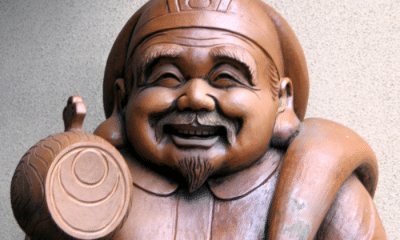
Japanese
Bishamonten: A Japanese God of War
Bishamonten: A Japanese God of War
How did an Indian god of wealth become a Japanese god of soldiers? Keep reading to find out!
In Japanese folklore, the Seven Lucky Gods are among the most popular. Thought to grant protection and good fortune to their followers, each can also serve as a patron or protector for a specific class or profession in society.
His heavy armor and stern expression mark Bishamonten out as the patron of warriors. Soldiers prayed to him not only for physical strength and fortune in war, but also to uphold the idea virtues of a disciplined and dignified fighter who protected others.
Outside of his role in the Lucky Gods, Bishamonten, who is also called Bishamon or Tamonten, remains a popular and powerful deity. As the guardian of the northern direction and the chief of the Four Heavenly Kings, Bishamonten commands an army of nature spirits to ward off evil and misfortune.
The great warrior god was not, however, always such a militant figure. In fact, his earliest origins had more to do with riches than they did with fighting.
Bishamonten’s Buddhist Origins
Bishamonten is one of many Japanese gods whose origins lie in India. He was brought to Japan with the Buddhist faith.
In Indian Buddhist texts, Bishamonten is known as Vaisravana. He is the chief of the Four Heavenly Kings.
These four great gods of Buddhism watch over the four cardinal directions of the world to protect it from evil. Bishamonten is the guardian of the north.
Each of the Four Heavenly Kings had the ability to control a different type of supernatural beings to help them fight against evil spirits. They also dressed for war and were seen as great fighters themselves.
In Buddhist texts, Vaisravana specifically commanded the Yakshas, a type of nature-based minor gods similar to the Greek nymphs. In Japan, these were likened to the kami, spirits of the natural world.
Bishamonten wore heavy armor in many of his images. He often had a yellow face, a color closely associated with him and, in Japanese traditions, typically carried a large spear.
While most Buddhist countries recognized some version of this god, in Japan he became associated with warfare. His protective watchfulness over the northern direction made him a guardian figure, eventually becoming a more warlike god.
Bishamonten had other roles, however.
Like his Indian counterpart, Bishamonten was associated with wealth and good fortune in addition to physical protection.
In India, Vaisravana typically held an umbrella as a symbol of divinity. In Japan, this was changed to a pagoda that represented the divine treasure house.
As the guardian of divine treasure, Bishamonten had the power to both protect and give away wealth.
He was also sometimes called Tamonten, which translates as “Listener of Many Teachings.” In this role, he was specifically the guardian of places where the Buddha preached.
Because of this, Bishamonten is often pictured as a doorway guardian in Buddhist temples. He is usually shown opposite of Hachiman, the archer god who protects Japan in both Buddhist and Shinto traditions.
Bishamonten’s association with both protection and wealth eventually led to his incorporation into the grouping of the Seven Lucky Gods, or Jurojin, in Japanese folklore. Like the other Lucky Gods he could give wealth and protection, but Bishamonten’s military dress made him the specific god of fortune in war.
My Modern Interpretation
Raisravana, however, was not the earliest incarnation of this god.
He was largely based on the Hindu god Kubera, who is the god of wealth and the king of the Yakshas. Vaisravana is a title used for Kubera in some Hindu writings.
When Buddhism emerged in India, the sutras used many familiar Hindu concepts and spirits. The god of wealth was subtly changed to be a god of protection.
His character was changed to more closely reflect Buddhist ideals. He was shown with a mongoose to show the virtue of generosity.
The mongoose is the enemy of the snake, which symbolizes greed and selfishness in Buddhism. Often, Vaisravana’s mongoose has jewels coming out of its mouth to show the way in which wealth should be shared.
One of the earliest recorded stories about Vaisravana recounts this charitable virtue. As a wealthy human named Kubera he had given all the grain produced by one of his mills to the needy, earning him godhood.
Chinese traditions, however, already had many gods of riches. They focused more on the character’s protective nature.
Thus, by the time the character reached Japan, he had a more militant aspect than he had in most Indian depictions. His armor was emphasized and a practical spear replaced the symbolically-rich mongoose familiar.
In Japanese folklore, Bishamonten became distinct from Vaisravana and other dieties inspired by him. While many Buddhist cultures have a similar god, Japan’s is far more militant.
Rather than being a generally protective god, Japanese tradition emphasized his role as an enforcer of law. He did not just repel evil spirits, he actively sought out wrongdoers and those that might pose a threat to the faithful.
Bishamonten became a patron of fighters in Japan. It was uner this guise that he became one of the Seven Lucky Gods.
When invoked as a group, these gods provide general protection and good fortune. Individually, however, they represented specific virtues and blessings.
As a warrior and protector against evil, Bishamonten personified the virtues that Japanese society valued in their own fighters. He was authoritative, dignified, and had a focus on following the rules.
As one of the Seven Gods of Fortune in Japanese folklore, Bishamonten was even further separated from his earlier origins. Rather than being a protective deity of charity, he was specifically invoked by fighters and leaders for strength, steadfastness, and to bless their cause.
While Japanese tradition still recognizes that Bishamonten is derived from Buddhist and Hindu sources, their envisioning of the god has only tenuous connections to his origins. As he was translated through different cultures and time periods, the god of wealth was transformed into a god of war.
In Summary
In Japanese Buddhist traditions, Bishamonten is a protective god. As the chief of the Four Heavenly Kings, he can command an army of nature spirits to fight against the forces of evil.
He originated as Kuberu, a Hindu god of wealth and prosperity. In Buddhist traditions, this god was named Vaisravana and made a god of charity and protection to better align with Bddhist ideals.
When he was first brought to Japan, Bishamonten was considered a protector but did not have the overtly militant depiction that became standard there. Over time, his status as a protective leader made him more aligned with the Japanese ideal of a warrior.
Bishamonten became a god of war, often shown alongside the archer god Hachiman. He was a popular guardian figure at temples, where he was thought to keep evil from entering and protect the wealth within.
When the Seven Lucky Gods emerged in Japanese folklore, Bishamonten was one of the deities chosen to ensure prosperity and protection for people from all backgrounds. As the patron of warriors, however, he specifically granted good fortune in battle.
From a god of wealth, Bishamonten came to represent the virtues of authority, dignity, and steadfastness. While he originated as a god of wealth and, later, as a personification of charity, Bishamonten is known in Japan as a fierce and powerful protective god.







